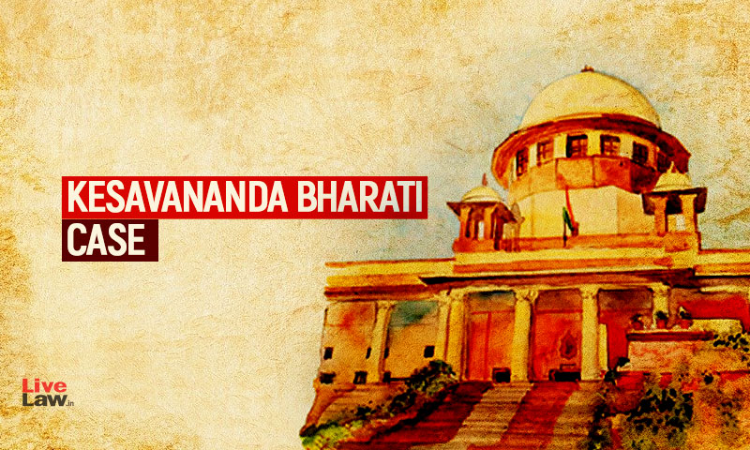On April 24, 1973, the Supreme Court issued its historic decision in Kesavananda Bharati Sripadagalvaru and Ors vs. State of Kerala and Anr, redefining the relationship between Parliament and the Constitution.

Kesavananda Bharati Case (1973)
- The Kesavananda Bharati judgement, was a landmark decision of the Supreme Court that outlined the basic structure doctrine of the Indian Constitution.
- The case has also been dubbed the Fundamental Rights Case.
- In a 7-6 judgement, the Supreme Court asserted its jurisdiction to overturn constitutional amendments that violated the constitution’s essential design.
- The Basic Structure doctrine was used by the Court to establish that the constitution has a basic structure of constitutional principles and values.
The following were the main outcomes:
- The Basic Structure Doctrine is a notion that limits the capacity of Parliament to change the Indian Constitution. It believes that Parliament cannot modify certain essential characteristics of the Constitution, such as the idea of separation of powers.
- Judicial Review: The Court largely confirmed the recent precedent Golaknath v. State of Punjab, which found that constitutional amendments made under Article 368 were subject to fundamental rights review, but only if they affected the “basic structure of the Constitution.”
- Judicial Review Exceptions: At the same time, the Court maintained the legality of the first provision of Article 31-C, which meant that revisions intended to implement the Directive Principles but not affecting the ‘Basic Structure’ would not be subject to judicial review.
The doctrine has been criticised
- Dilution of powers: The fundamental structure theory has been criticised for weakening the separation of powers premise and eroding Parliament’s autonomy.
- It has also been criticised as a hazy and subjective kind of judicial assessment.
Landmark cases of the doctrine
- Indira Gandhi v Raj Narain (1975): In this case, the Supreme Court used the Kesavananda principle for the first time. It overturned the Constitution (39th Amendment) Act of 1975, which banned the Supreme Court from hearing challenges to the election of the President, Prime Minister, Vice President, and Speaker of the Lok Sabha.
- Union of India vs. Minerva Mills Ltd. (1980): The Supreme Court overturned a phrase added to Article 368 that stated “there shall be no limitation whatever on Parliament’s constituent power to amend by addition, variation, or repeal the provisions of this Constitution.”
- P Sambamurthy v State of Andhra Pradesh (1986): The Supreme Court invalidated a provision of the 32nd Amendment (1973), which established an Administrative Tribunal for Andhra Pradesh for service disputes, removing the High Court’s P jurisdiction.
- In L Chandra Kumar v Union of India (1997), the Supreme Court overturned a provision of the 42nd Amendment, which established administrative tribunals that were immune from judicial review by High Courts.
The Judgment’s and the Doctrine’s Importance
- Improve judicial review: The idea underpins the Indian judiciary’s authority to examine and overturn amendments to the Indian Constitution approved by Parliament.
- Clarification on Article 368: Article 368 only proposes a ‘process’ for amending the Constitution. The same could not be interpreted as a ‘power’ conferred on Parliament to amend the Constitution in order to change the ‘core’ of the Constitution, also known as the ‘fundamental structure’ of the Constitution.
- Judicial Review is not contradictory to legislative authority, according to Justice Shastri, because it is carried out “not out of any desire to tilt at legislative authority in a crusader’s spirit, but in the discharge of a duty imposed by the Constitution.”
- A system of checks and balances: The Kesavananda Bharati judgement (1973) stated unequivocally that judicial review cannot be used to usurp parliamentary sovereignty. It is a “system of checks and balances” designed to prevent constitutional functionaries from exceeding their authority.
Source: https://www.hindustantimes.com/india-news/supreme-court-marks-50th-anniversary-of-kesavananda-bharati-case-with-special-web-page-on-basic-structure-doctrine-constitution-judicialreview-separationofpowers-basicstructure-supremecourt-101682319375265.html
